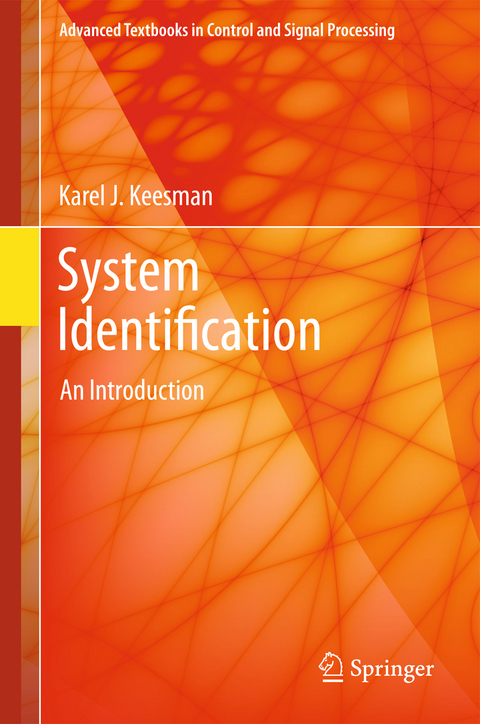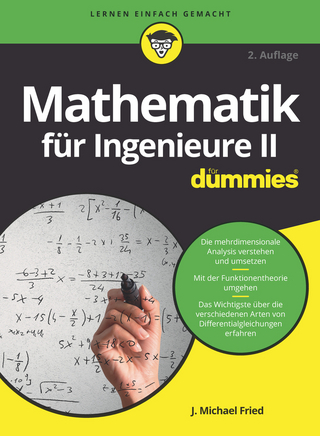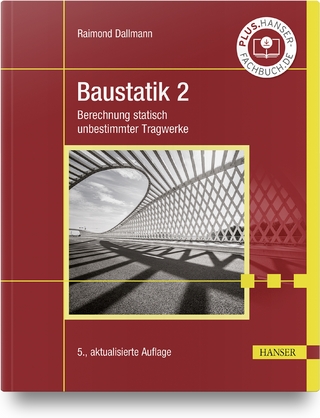System Identification
Springer London Ltd (Verlag)
978-0-85729-521-7 (ISBN)
System Identification shows the student reader how to approach the system identification problem in a systematic fashion. The process is divided into three basic steps: experimental design and data collection; model structure selection and parameter estimation; and model validation, each of which is the subject of one or more parts of the text.
Following an introduction on system theory, particularly in relation to model representation and model properties, the book contains four parts covering:
• data-based identification – non-parametric methods for use when prior system knowledge is very limited;
• time-invariant identification for systems with constant parameters;
• time-varying systems identification, primarily with recursive estimation techniques; and
• model validation methods.
A fifth part, composed of appendices, covers the various aspects of the underlying mathematics needed to begin using the text.
The book uses essentially semi-physical or gray-box modeling methods although data-based, transfer-function system descriptions are also introduced. The approach is problem-based rather than rigorously mathematical. The use of finite input–output data is demonstrated for frequency- and time-domain identification in static, dynamic, linear, nonlinear, time-invariant and time-varying systems. Simple examples are used to show readers how to perform and emulate the identification steps involved in various control design methods with more complex illustrations derived from real physical, chemical and biological applications being used to demonstrate the practical applicability of the methods described. End-of-chapter exercises (for which a downloadable instructors’ Solutions Manual is available from fill in URL here) will both help students to assimilate what they have learned and make the book suitable forself-tuition by practitioners looking to brush up on modern techniques.
Graduate and final-year undergraduate students will find this text to be a practical and realistic course in system identification that can be used for assessing the processes of a variety of engineering disciplines. System Identification will help academic instructors teaching control-related to give their students a good understanding of identification methods that can be used in the real world without the encumbrance of undue mathematical detail.
Karel Keesman received his Ph.D. for his work on set-membership identification and prediction of ill-defined systems, with application to a water quality system at the University of Twente in 1989. His main research interests focus on identification, modelling and control of uncertain dynamic systems with a biological component, as bioreactors, environmental and ecological systems, with more than 120 papers in international journals and refereed proceedings. For more than 25 years he is active in the field of system identification, in which he developed and applied identification methods to a wide range of problems.
Introduction.- Part I: Data-based Identification.- System Response Methods.- Frequency Response Methods.- Correlation Methods.- Part II: Time-invariant Systems Identification.- Static Systems Identification.- Dynamic Systems Identification.- Part III: Time-varying Systems Identification.- Time-varying Static Systems Identification.- Time-varying Dynamic Systems Identification.- Part IV: Model Validation.- Model Validation Techniques.- Part V: Appendices: Matrix Algebra; Statistics; Laplace, Fourier and z-Transforms; Bode Diagrams; Shift Operator Calculus; Recursive Least-squares Derivation; Dissolved Oxygen Data.
| Reihe/Serie | Advanced Textbooks in Control and Signal Processing |
|---|---|
| Zusatzinfo | 37 Illustrations, color; 72 Illustrations, black and white; XXVI, 323 p. 109 illus., 37 illus. in color. With online files/update. |
| Verlagsort | England |
| Sprache | englisch |
| Maße | 155 x 235 mm |
| Themenwelt | Mathematik / Informatik ► Mathematik ► Angewandte Mathematik |
| Technik ► Elektrotechnik / Energietechnik | |
| Technik ► Maschinenbau | |
| ISBN-10 | 0-85729-521-7 / 0857295217 |
| ISBN-13 | 978-0-85729-521-7 / 9780857295217 |
| Zustand | Neuware |
| Haben Sie eine Frage zum Produkt? |
aus dem Bereich




